|
【現場】蘇鵬個展“感今惟昔”3日在北京上苑藝術館
[2017-9-29 21:04:05]
【現場】蘇鵬個展“感今惟昔”3日在北京上苑藝術館
Supeng solo exhibition: With Nostalgia from the Present in Shangyuan Art Museum
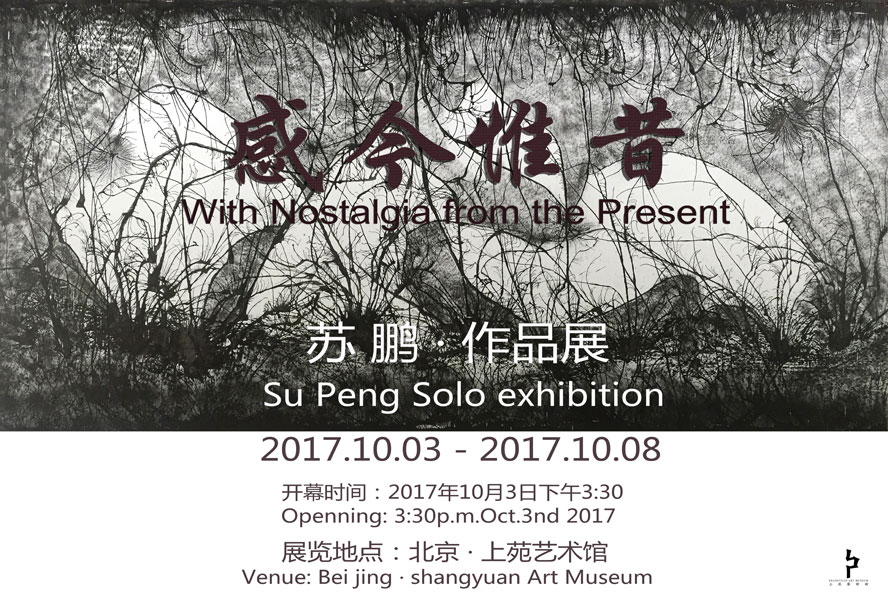
藝術家| Artist:蘇鵬 Supeng
開幕時間| Opening:10.3 15:30 pm
展覽時間| Exhibition Dates:10.3- 10.8.2017
地點|Venue:
北京上苑藝術館BEIJING Shangyuan Art Museum
地址|Add. 北京市懷柔區橋梓上苑藝術館
Shangyuan Art Museum , Qiaozi County, Huairou District, Beijing
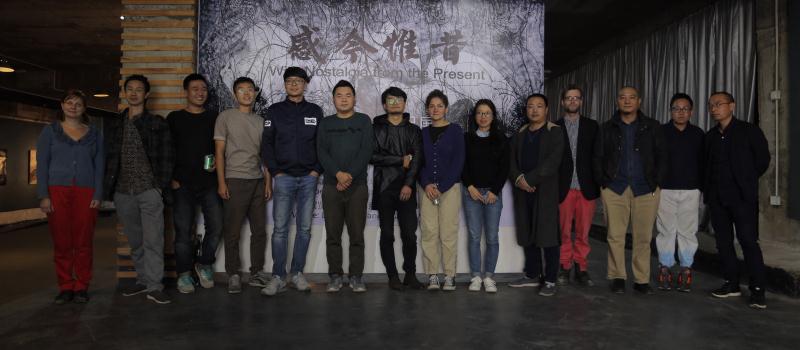
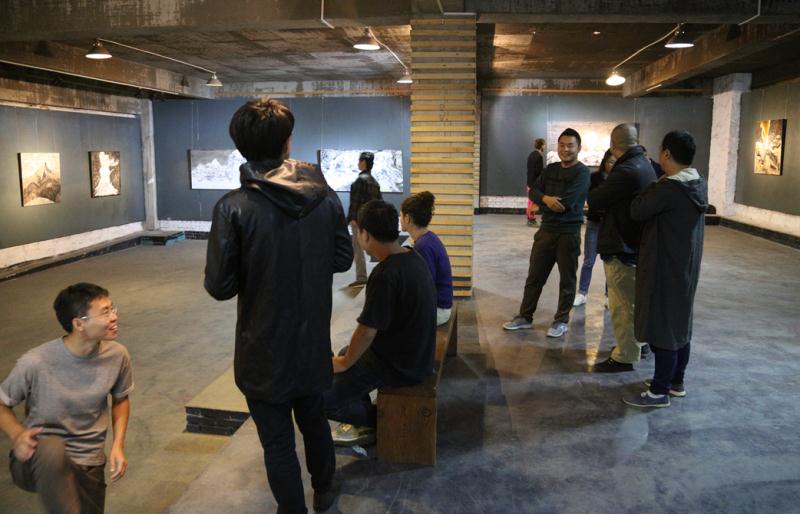
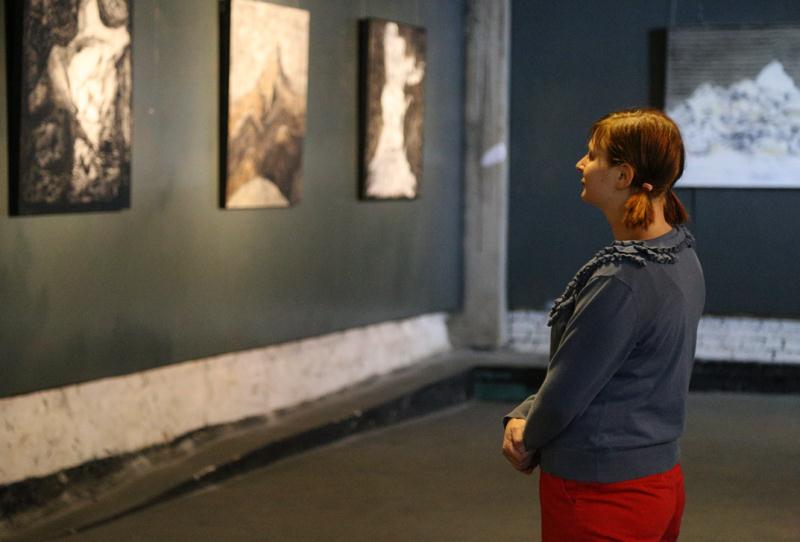
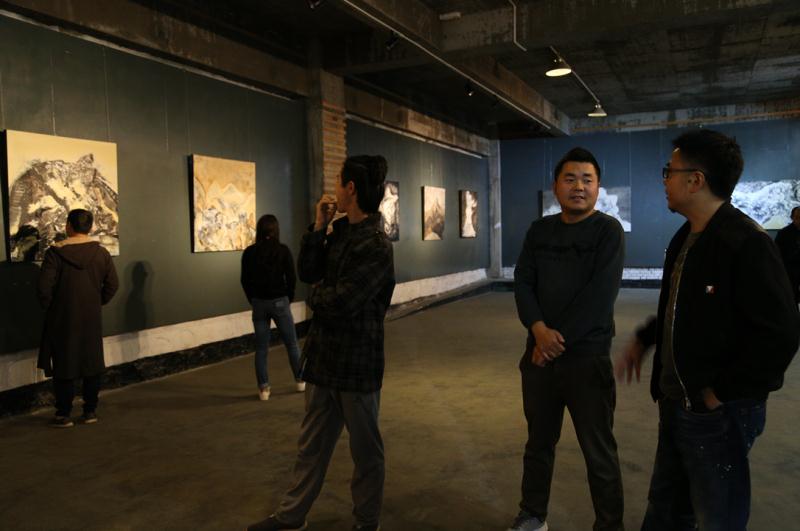
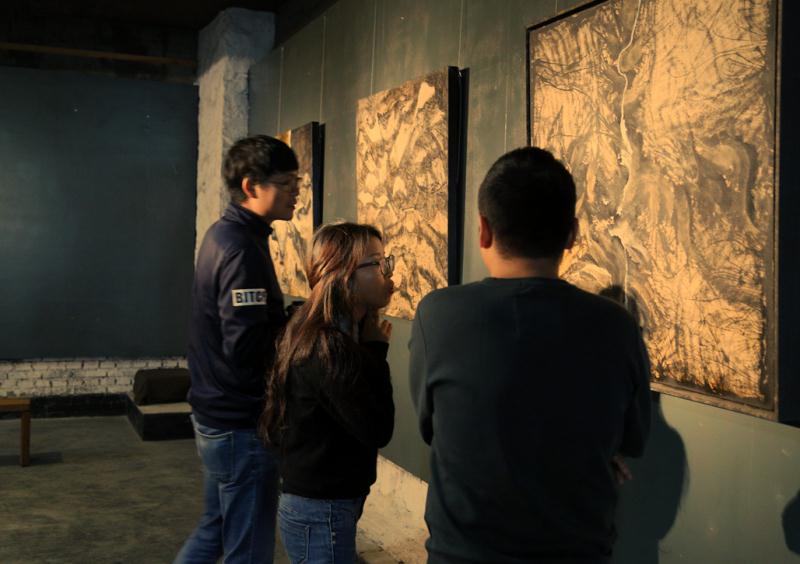
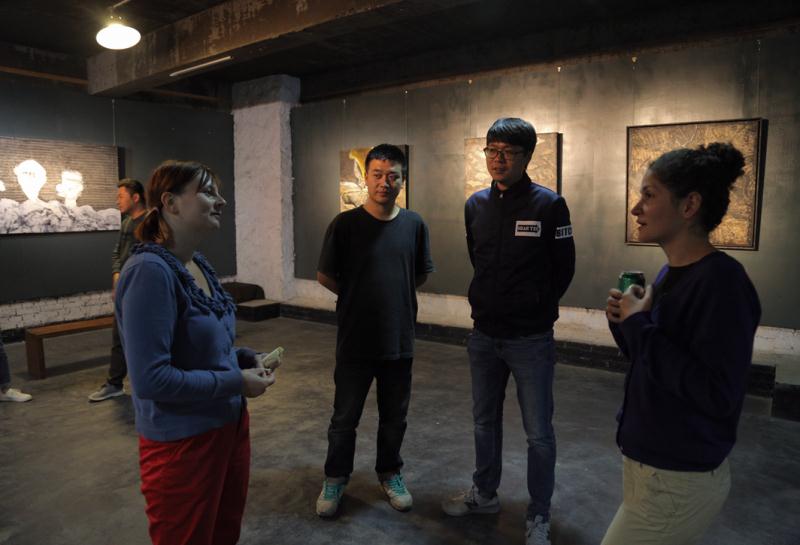
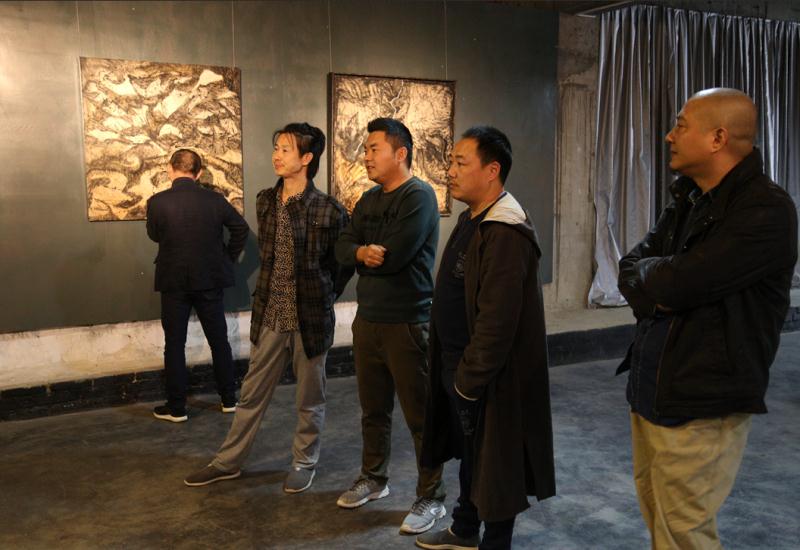
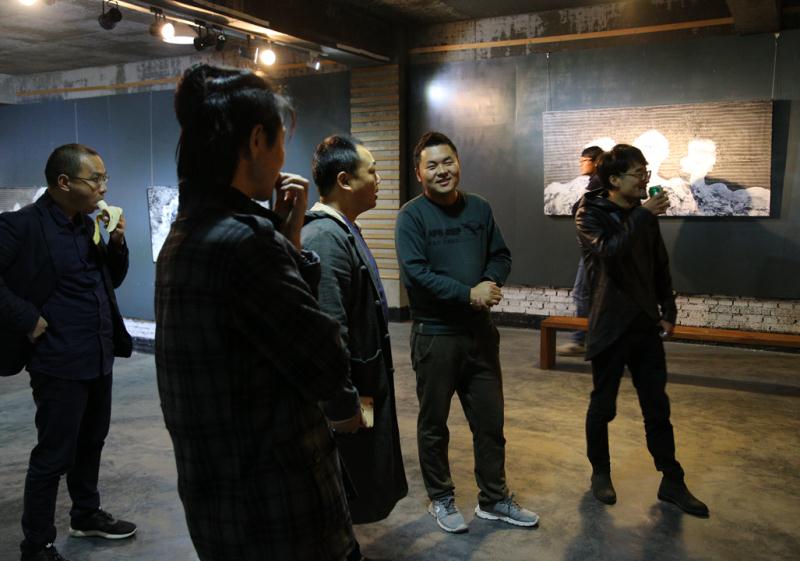
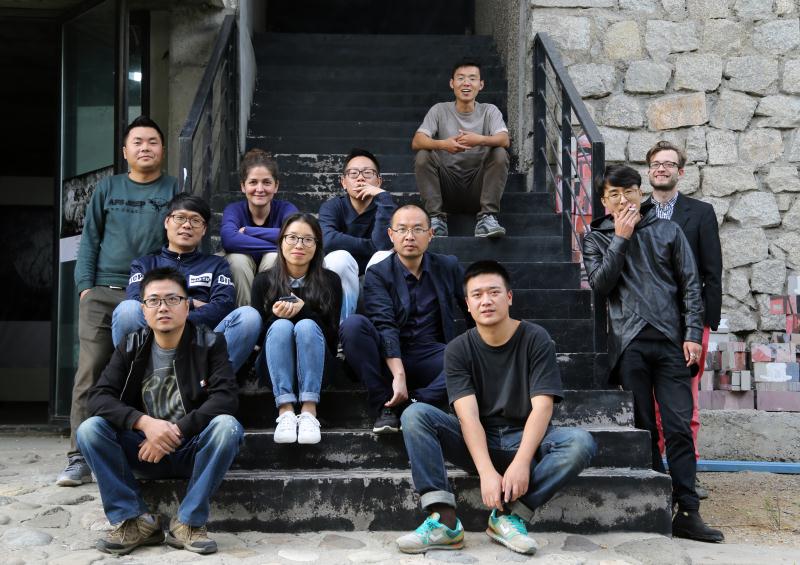
自述:
創作于我而言,與我同在一個生命體,共存亡。繪畫創作屬于我生命中的一部分,會一直伴隨著我,直到終老。
很多朋友和欣賞我作品的朋友會稱呼我為“藝術家”,其實對于此稱呼我是不認同的,個人覺得我暫時只能算的上是一名畫家,且是一名純粹的畫家。在我的創作中現一直限于架上繪畫創作,這只是現當代多元化“藝術”中的一種。很多人寓言架上繪畫即將走向滅亡,實在是可笑,人性不消失,個人情感尚存在于這個社會中,架上繪畫將永不會消逝。我是一名畫家,將個人無法用語言表達的情感實實在在的呈現于畫面中。
創作在我的生活中,是幫助自我表達的一種形式。我的繪畫創作作品上多呈現高原的情與景,源于我從小生活的環境,隨之長大又消失于我生活的環境,在這種存在與消失之間若影若現,將此呈現在我的繪畫作品中似乎能讓我感受身處其中。在我創作時,很少去想繪畫藝術的本體語言這些專業性的東西,我僅僅是將自己所想表達的內容通過不同的手段以及方式表現出來。不僅僅是在技法上的表現,更多的是通過材料屬性的特質以及繪畫創作中偶然瞬間趣味的保留,以最終能達到自我表達“幼時家鄉”的情感。“偶然瞬間”是我個人對架上繪畫藝術的探索,并非技巧的描摹。與其說是對繪畫藝術的一種實驗,還不如說是保留內心對繪畫藝術未知性的一種探索與追求,正是因為這種未知性鞭策著我不停前行。
繪畫創作的路很長亦很艱辛。在這個多誘惑,快節奏的社會中,放慢腳步,從一而終是一種情懷。在我的創作道路上時刻警醒自己,勿忘初心,方得始終。
Statement on Painting
Painting has been clung to and become an integral part of my life. It would be always with me till the end.
Many friends in my personal life and who appreciate my works call me “An Artist”. Actually I don’t really agree on the title. Instead, I regard myself as a painter, a pure painter. My creations are limited to easel painting, simply one of the modern diversified arts. Regarding this art, a lot of people shout out that it’s going to its doom, which is indeed ridiculous. Easel painting will never die out, since humanity won’t, and personal emotions always exist in the society. As a painter, I present the feelings one cannot speak in words through the genuine pictures.
Painting is a way of self-expression. My works usually show the sentiment and scene of the Loess Plateau. Appearing in my childhood and then disappearing as I grow up, the special environment is displayed in my paints, and it seems that I still live there. While painting, seldom thinking about the professional knowledge like the ontology language of painting art, I merely express what I want to express by different methods. More than the technical performance, I eventually convey my affection to the hometown by the material features and the retention of fun in occasional moments. Occasional Moment is not the imitation in techniques, but my own exploration to easel painting art. Rather than say it’s an experiment on painting, you can consider it as seeking and pursuits to the unknown area of painting art. It’s just the unknown that spurs me to keep moving forward.
The road of painting is long and hard. In this temptatious and quick-paced society, it’s a precious temperament to slow down and be dedicated. I would always remind myself that persistence on the original dream comes out a consummate ending.
作品選刊:
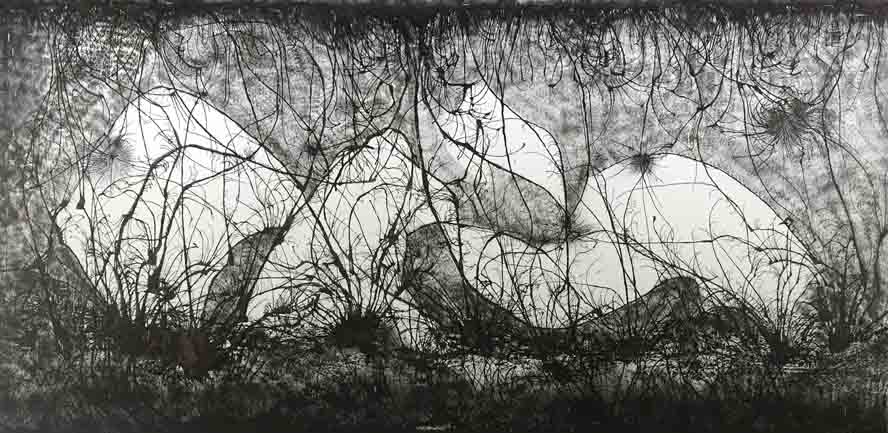
蘇鵬《巨石與枯枝》100×200cm 布面油畫 2017年(上苑藝術館收藏)
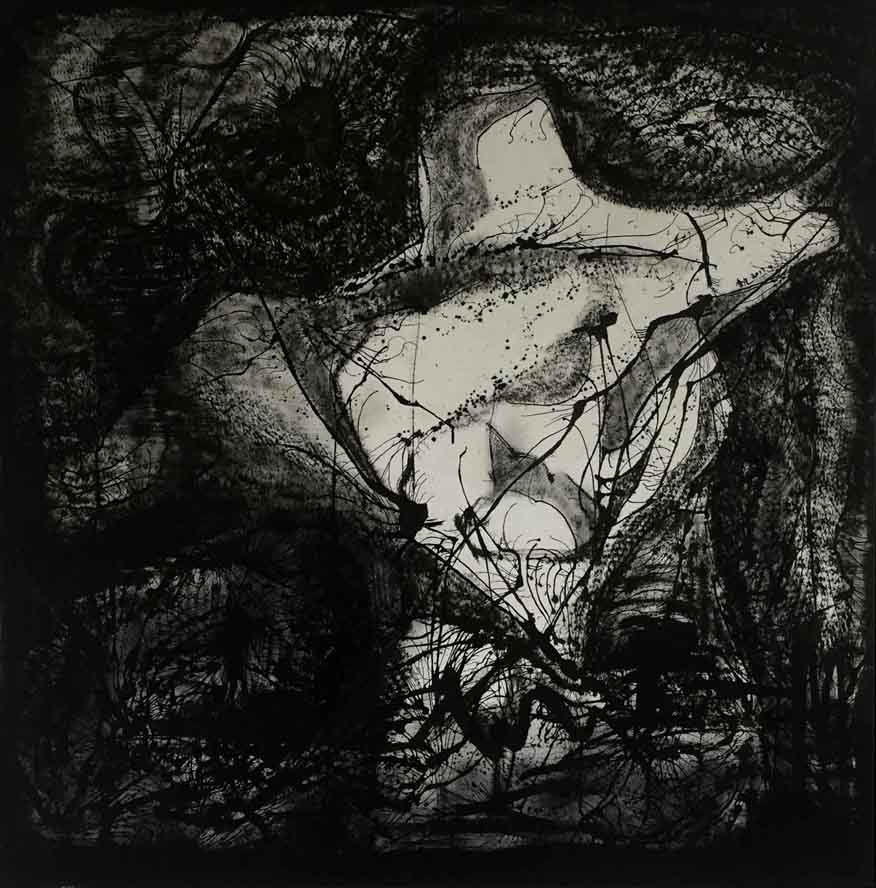
《殘軀》100×100cm 布面油畫 2017年 蘇鵬 (上苑藝術館收藏)
“西北情結”——談蘇鵬繪畫
文/張林杰
我與蘇鵬相識多年,他的繪畫成長我相對比較了解。他從入學開始對繪畫有執著的熱愛后我便開始關注他。本科期間為他和他的同學策劃過一個三人展覽。當時就為他們的繪畫感到驚訝,雖然他們畫面不是太成熟,但是他們充滿了熱情。那時蘇鵬不怎么愛說話,只要到了酒桌上喝開了,就很能表達,盡顯西北漢子的風采,他的爽朗性格謙和的為人讓我很喜歡。
“畫品即人品”我是非常認同的。一個人繪畫的格調高低取決于其人品。蘇鵬的作品和他的為人是有一致性的。他看待問題很執著,但是和人溝通卻非常謙遜。正如他的繪畫一樣,有著直接的意象,但是語言表達卻很含蓄。縱觀他的繪畫歷程我認為有一條線索是他一直致力表達的——“西北情結”。不論早期還是現在的作品都有一種西北人文的情愫在里面。不同時期畫面風格和符號選擇都是蘇鵬性情與記憶中沉淀出來的。我姑且把他的作品分為四個時期:懵懂時期、白色時期、材料語言時期、大意象時期。
懵懂時期
這個時期他剛入學不久,擺脫高考模式的束縛。對于繪畫有全新的認識,很快的進入解構訓練階段。鳥、山、樹等符號在他的畫面中不斷出現,此時畫面形式、手法、色調都比較多樣,也是他在尋找多種可能性的階段。而此時他的畫面在山的形象中開始出現“窯洞”的符號,也就是窯洞的符號讓他找到了一個符合自己情感的突破口。
白色時期
此時他開始把“窯洞”符號放大,并且把整幅畫面全部畫成白色。看這批作品的時候你會有一種置身雪景下的西北農村的感覺。很純凈的白色環境下窯洞的形態若隱若現,這是一種場景,是在大都市生活的我們很難見到的場景,更是不斷消失的農村文化的寫照。很多中國農村的文化現象都開始變成一個個記憶中的片段。他所表達的正是通過記憶對于一個個片段的再現,在喧鬧的都市生活中鄉村的情感的標記。這批作品在繪畫層面來說是對于形式主義的探索,點、線、面的組合在其畫面中不斷的尋找可能性。但是形式主義的表達是很艱難的,特別是找到符合自己情感的表達更是難上加難。因為這需要經歷一個漫長而枯燥的訓練階段。
材料語言時期
白色時期作品遇到的瓶頸讓他開始找尋新的方法,此時開始關注材料語言。在繪畫中材料本身就有其可言說的,以至于很多藝術家把材料單獨拿出來做作品。博伊斯、塔比埃斯、基弗等等這些藝術家都是發現了材料本身的魅力,用以表達其藝術。蘇鵬正是看到了這一點,在其“窯洞”元素上廣泛的運用不同的材料。同時對于顏料的運用也開始變得更加考究,這個時期的作品在畫面的處理上變得更加成熟,在表達內容上解構的更加徹底,可以說這個階段更多的是在解決技術問題。
大意象時期
在解決了技術問題后進入了全新的高度。畫面中“窯洞”的符號開始模糊消失,取而代之的是大意象中的山石、河流、人物、雜草等等。這批作品中繪畫性被削弱,偶發性被重視,而畫面中呈現出的形象多數是根據偶發的呈現來改造的。但是他又能把偶發的形態控制的很好,這就使得這批作品更加的成熟。作品中雖然“窯洞”符號消失了,但是畫面中的色調,結構,物象無不透露出西北人文的特性。《巨石與枯枝》這張作品是我認為最具代表性的,畫面中如荒漠中的雜草,而雜草充滿了野性的生命力。穿插的雜草凝結成了一張網,這張網隔開了觀者與網背后那巨大的不可捉摸的空間,也隔開了現代文明與野性文明的距離,留給我們的是對這張網的思考。《朝圣之路》這張作品非常精彩畫面中有著中國傳統山水的意象卻又有著對傳統意象的反叛,有著隱隱約約的人文痕跡卻又被粗拙的筆墨埋藏其中。畫面上半部分有如飛來之石一樣牢牢的扎在畫面中心。看這張作品會感覺非常的暢快淋漓。直接、狂野卻又很有章法。這與作者本人的性情如出一轍。
看過他四個時期的作品會更清晰的感受到到他繪畫中“西北情結”的演變過程。表現的物象在改變,但是情感沒有改變,追求的東西沒變。作為一個生活在南方的西北人,種種環境、文化的差異讓他心里的那份情結更加的珍貴。正是這種情感讓他的創作有如源頭活水一般不斷創造出更多優秀的作品。
蘇鵬是一個很有藝術理想的人,他曾和我說他對于畫畫并不急于求成,只希望在一生中能夠在藝術史上留下名字。我很欽佩這樣有理想的人。現在中國的藝術環境被各種利益驅使,很少有人能夠靜下來花時間去沉淀自己的藝術。而真正好的藝術一定是經過個人不屑的努力通過時間沉淀下來的,這是不斷否定自己的漫長的痛苦過程。只有做好了充分的準備和有足夠勇氣和毅力的人才能走下去。我想他就是這樣的人。
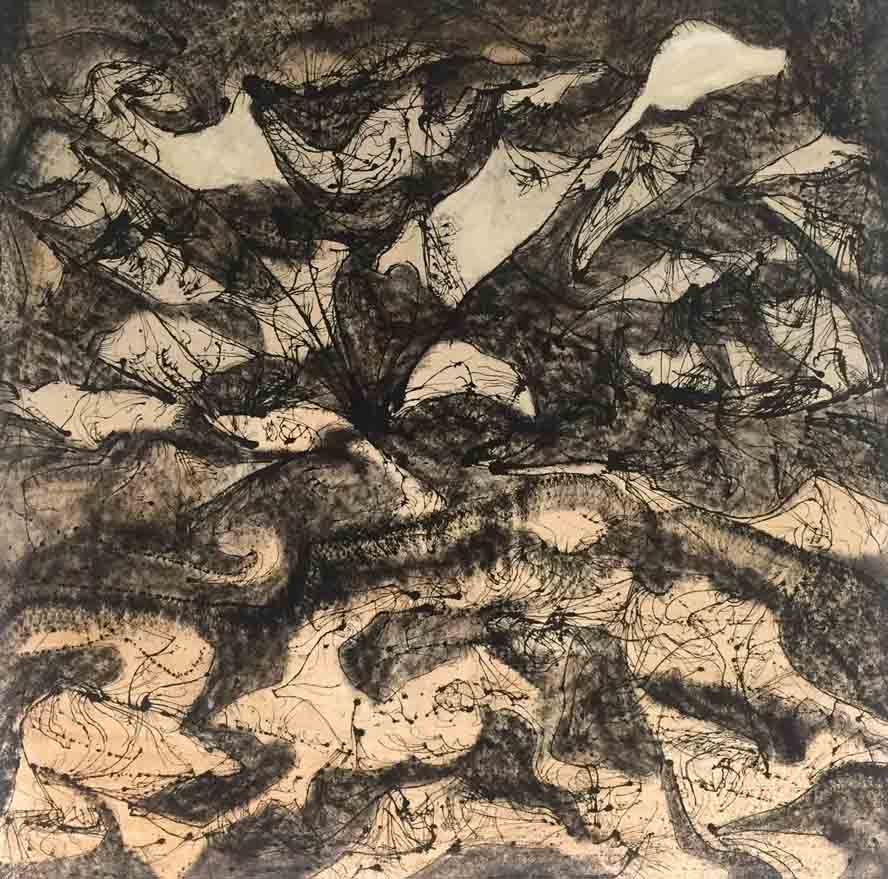
《記憶之田埂》100×100cm 布面油畫 2017年
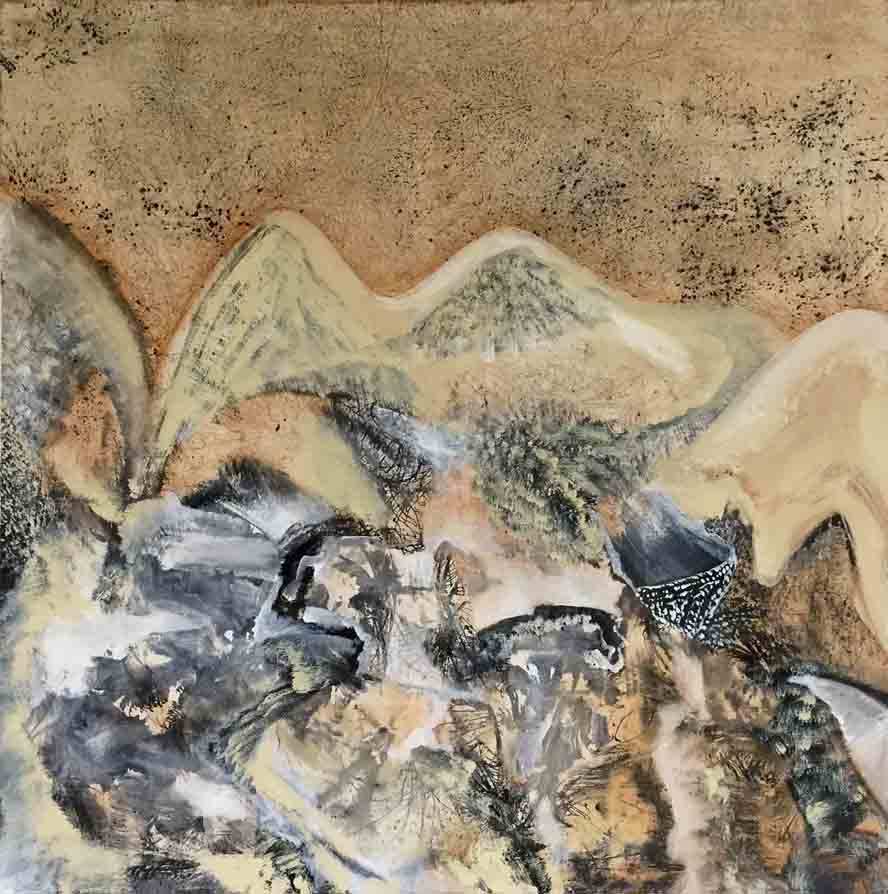
《河畔的風景》100×100cm 布面油畫 2017年
“Northwest Complex” - Talk on Su Peng’s Painting
Author:Zhang Linjie
I am acquainted with Su Peng for many years, and know well about his growing path on painting. He drew my attention since he came to the university and showed great enthusiasm for the art. During his undergraduate studies, I planned an exhibition for him and other two students. I was surprised by their works, which were not mature enough on picture presentation, but full of passion. Su Peng didn’t talk much. Once we drunk together, he became very communicative like a typical Northwest man . I really appreciate his brightness and modesty.
I highly agree that one’s artistic quality shows his moral standing. A painter’s level is determined by his personality. Su Peng’s character conforms to his works. He is persistent on problem solving, but very humble in communicating with others. Just like his paints, they have objective images, but express in a implicit way. Throughout his development on painting, I find an element that he dedicates to presenting- “Northwest Complex”, which is contained in the creations of both his early and current periods. The picture styles and symbol options are accumulated from his temperament and memories. I tentatively divide Su’s works into four periods: Muddling Period, White Period, Material Language Period and Broad Image Period.
Muddling Period
In this period, he began his college studies. Free from the constraints of National Entrance Examination, he had a brand new understanding on painting and soon came to the stage of deconstruction training. Some images like birds, mountains, trees appeared on his canvas. In a variety of painting styles, techniques and color tones, he was also in a stage of seeking for more possibilities. The symbol of carve dwelling was seen then together with the mountain images. It’s the carve dwelling that makes him find an outlet of personal emotions.
White Period
In this period, he began to stay out the symbol of carve dwelling and paint the whole picture in white. You would feel at the snowy village of Chinese Northwest. The carve dwelling appeared faintly in the pure white surrounding, which was a scene seldom seen in the city, and even more a reflection of gradually disappearing rural culture. Many cultural phenomena in Chinese rural area became some fragmental memories. What Su Peng conveyed was to represent the fragments through his memories and to leave in the noisy urban life some signs of the sentiment for villages. These works were an exploration of formalism. Through the composition of points, lines and planes, more possibilities were discovered. But it’s hard to present the formalism, even harder to find a way to express his personal feelings properly, as it need a long and boring practice stage.
Material Language Period
The bottleneck in the White Period pushed him to search for new methods. He begun to notice material language. Material itself has words to say in painting, so many artists brought out the material solely as their creations. Some like Joseph Beuys, Antoni Tapies and Anselm Kiefer found the charm of materials and applied them on art expression. Su Peng realized it as well and different materials were used based on the element of “carve dwelling”. Meanwhile he became more particular about the pigments. The works in this period were maturer in the picture processing, and deconstructed more completely in content presentation. We could consider it as a period of focusing on technical problems settlement.
Broad Image Period
Su Peng’s painting came to a new level after figuring out the technical problems. The symbol of “carve dwelling” began to be vague till it disappeared. Instead, some broad images like mountains, stones, rivers and weeds were shown in the pictures. The painterly nature was diluted with the incidental performance. Mostly, the images in the painting were transformed occasionally. But he had a well control of incidental performance, which made his works better-considered. Although the symbol of “carve dwelling” disappeared, the painting color tones, structures, and images still all displayed the features of Chinese Northwest civilization. I consider Rock and Deadwood as the most representative creation. The weeds on the picture are full of wild vitality. They weave together to a net, which separates the viewers and the grand and intangible space behind, and isolates the modern and wild civilization, leaving us to think more. The Pilgrimage Road is another great work, which contains the images of traditional Chinese landscape but shows a rebellion against these images at the same time, and which reveals instinct humanity marks but they are concealed with rough brush. The upper part took up firmly the picture center like a flying stone. It’s to your heart’s content while viewing it, direct, crazy but well organized. It’s exactly the same as Su’s personality.
People who viewed his works of all the four periods will understand better about the developing process of Su’s “ Northwest Complex”. The images in the paintings change, but the emotions and pursuits never do. As a man from Northwest who lives in the South, the environmental and cultural differences make the complex more precious. It’s the complex that makes him create more great works continuously like flowing water.
Su Peng has his artist dream. He ever said to me, he didn’t rush for quick results, but to devote his whole life to leaving a position in the art history. I admire a person like him. The current art environment in China is pushed by profits, few people can get down to painting and spend time precipitating his art. But truly great art is derived from personal endless effort. It’s a long and tough process of self-denial. Only those who are in full preparation, courage and perseverance can move forward. I think Su Peng is such a man.
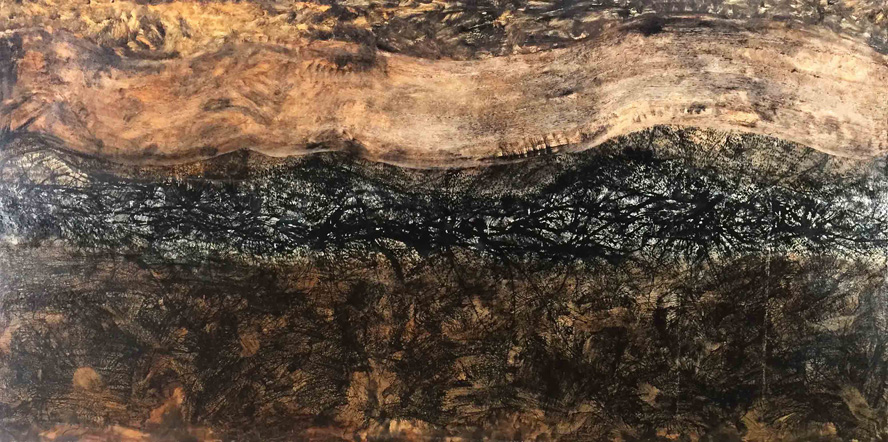
《黑老鍋一線天》100×200cm 布面油畫 2017年
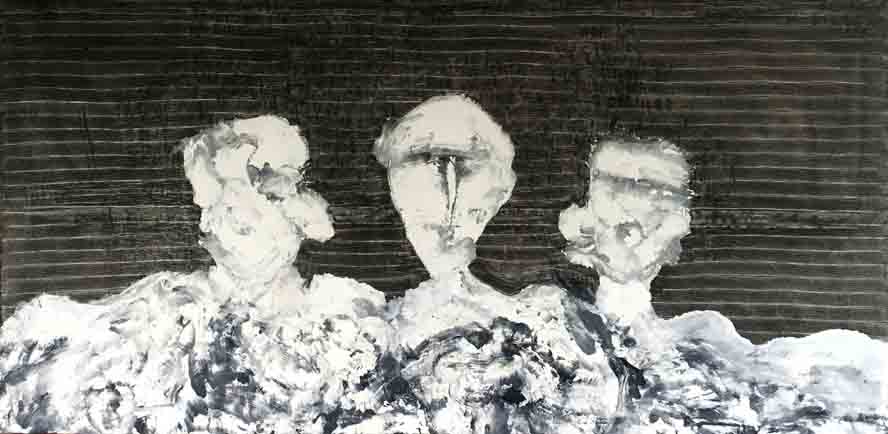
《黃土柱子之靈魂》100×200cm 布面油畫 2017年
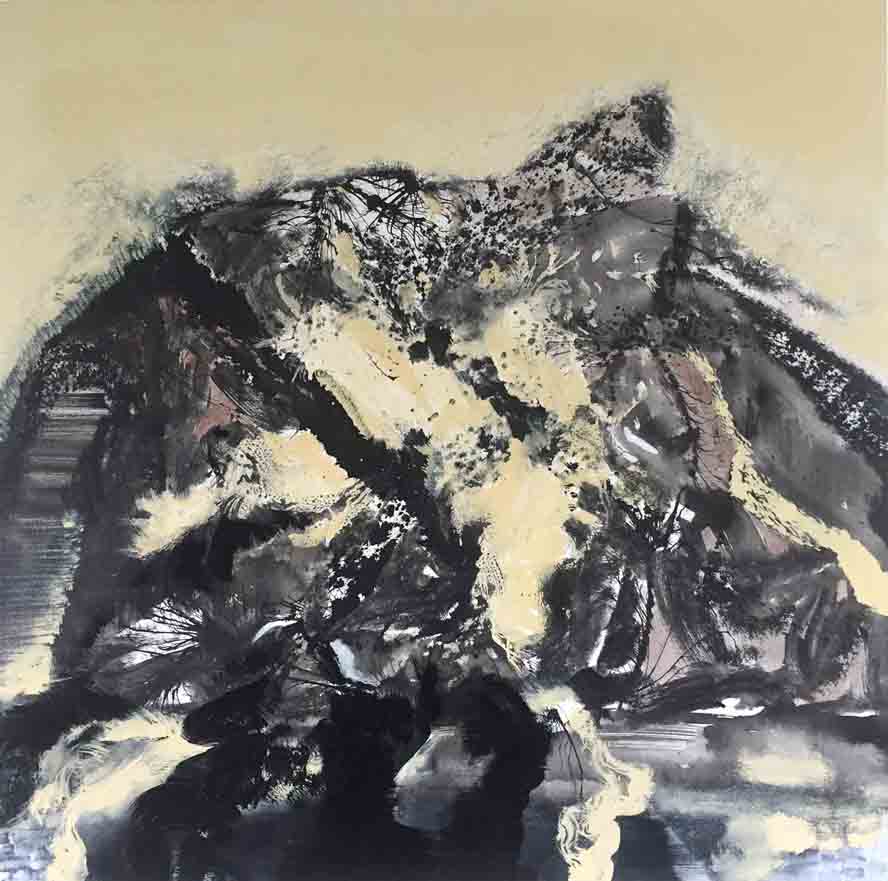
《水邊的山河石》100×100cm 布面油畫 2017年
蘇鵬 1989年出生于甘肅慶陽,2014年畢業于南昌大學美術系油畫專業。畢業后入駐南昌大學后街文化創意園,現為職業藝術家。
展覽經歷:
2012年油畫作品《舞動》參加“南昌大學首屆791藝術師生展”(南昌)
2012年油畫作品《靜》入選“江西省第七屆青年美術作品展”(南昌)
2012年油畫作品《對話》入選“江西省第二屆油畫展”并獲三等獎 (南昌)
2013年油畫作品《戀結》入選“生長”2013上海青年美術大展。在中華藝術館展出 (上海)
2013年油畫作品《念想》入選“繪畫的品格”油畫展,在大都美術館展出,作品并被收藏 (北京)
2014年舉辦“孤獨”的我們三人油畫展 (南昌)
2014年舉辦“我之根本”八人油畫展 (南昌)
2014年油畫作品《鋪陳》入選“江西省第八屆青年美術作品展” (南昌)
2014年油畫作品《傳說》入選“江西省第十四屆美術作品展” (南昌)
2014年油畫作品《念米脂》入選“高原高原第四屆西部美術展”獲三等獎并被收藏 (西安)
2015年油畫作品《傳說》入選“深入生活、扎根人民,首屆江西省優秀作品展”獲優秀獎(南昌)
2015年參加“思、無界”第二屆江西當代藝術展(南昌)
2016年油畫作品《流年》入選第二屆“獨立的品格”當代藝術展,獲優秀獎(北京)
2017 年參加“橋--上苑藝術館國際創作計劃開幕展” (北京)
編輯:馬力
------------------------------------------
北京·上苑藝術館 “國際創作計劃”(藝術駐留) 常年接受申請
上苑駐館藝術家的國際居留計劃生活記實
就上苑“國際創作計劃”答《中國新聞周刊》記者問
上苑藝術館-程小蓓接受《上層》雜志專訪
上苑藝術館-程小蓓·答韓國光州《全南日報》記者問
程小蓓答《美術周刊》記者問
程小蓓就建筑藝術答詩人、建筑批評人問
美國威斯康辛大學-展出程小蓓攝影《活路》作品選登
【現場】《在可說的這一切》毋蓬勃個展 21日在上苑藝術館
【現場】“無人棲居” 王毅、閆科含雙個展
【現場】 記憶:后視鏡中的戲劇——上苑藝術館主題項目展
【現場】“中國的空間”丹麥藝術家安亞個展26日在上苑藝術館
【上苑藝術館】鳥巢展出2015駐館藝術家作品同步認購價目表
【上苑藝術館】2007-2008駐館藝術家作品認購價目表
【上苑藝術館】 2009-2010駐館藝術家作品價目表
【上苑藝術館】2011-2012駐館藝術家作品認購價目表
【上苑藝術館】2013駐館藝術家作品認購價目表
【上苑藝術館】2014駐館藝術家作品認購價目表
【上苑藝術館】2016上苑駐館藝術家作品認購價目表
北京 上苑藝術館-107平米房屋轉讓-相關資料及實景圖
出租工作室-上苑藝術館,電話:60635299
-------------------
北京 上苑藝術館- 電話: 010-60635299 60635757
上苑藝術館官網 http://www.sh-yinshua.com/
文學藝術國際聯盟(簡稱:國際文盟)網 :Website: http://www.inlac.cc/
上苑英文站點:http://resartis.org/en/residencies/upcoming_deadlines/?id_content=3938
交通指南 :
□北京東直門916路、942路到懷柔,轉懷柔-沙峪口(上苑藝術館)
□京承高速12出口 > 右拐過水渠西行2KM > 良善莊路口北行到底>右拐300m路北
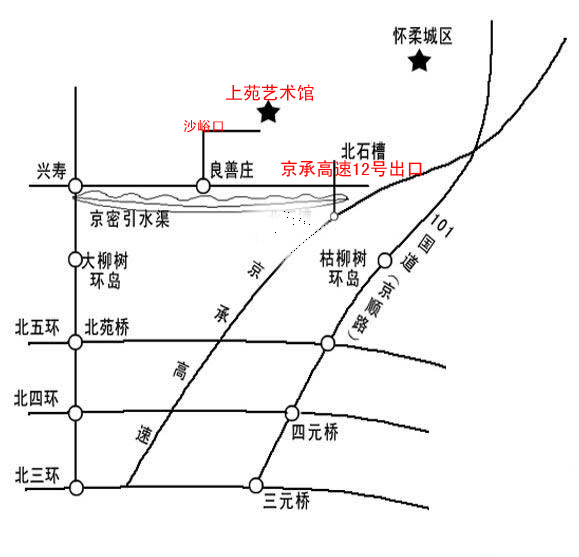
上苑藝術館地圖及衛星圖
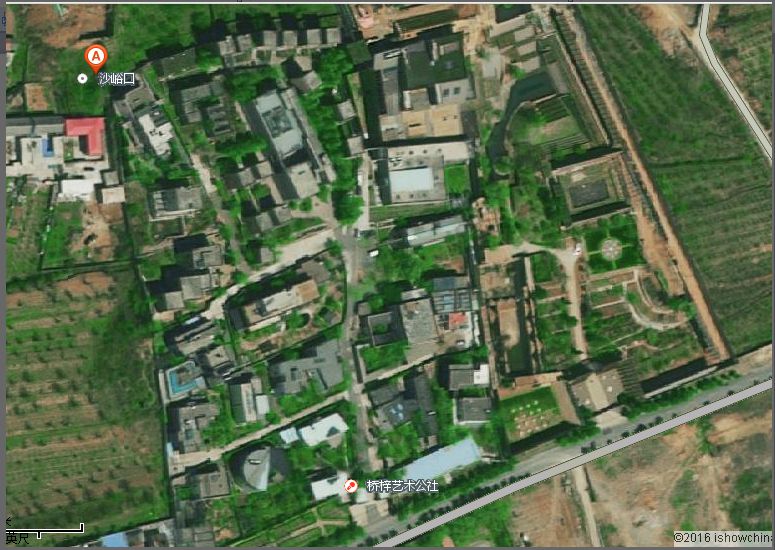
查看4901次
|
